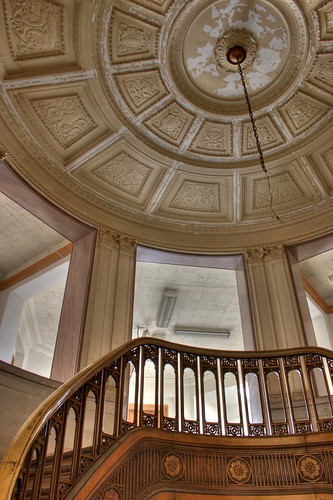Charles Schwab and Shipbuilding Labor
By Jonathan H

Charles Schwab, though ruthless with unions, wanted his employees to feel as if they were part of the team. He often did this by sponsering company baseball leagues, choir groups, and he invented an ingenuous new alternative to labor unions: Company Unions.
Part 2 — Schwab’s Gamble for War
Editor?s Note: This is Part Two in a three-part entry on San Francisco?s Dogpatch, Portrero Point, and Pier 70. The series follows the Progressive Era’s most influential industrialist: Charles M. Schwab and his influence on labor during World War I.
To see Part 1 of this history on Bethlehem Steel, click here.
Schwab (famous for his frequent visits to Monte Carlo) had his eyes set on Union Iron Works for some time as a personal ‘gambling project’ of his. Perhaps a pre-cursor to his later gamble on the H-beam in 1908 (which became essential in constructing skyscrapers), he put his money on the fact that the U.S. would need warships. The dry-docks at Pier 70 were a perfect setting for his new ante-up for Bethlehem. In 1905, under a trust called the United States Shipbuilding Company, he acquired Union Iron Works for the bargain price of $1,000,000 (VerPlanck).
Soon after Schwab’s acquisition of Union Iron Works, he set about to ensure that unions couldn’t form in his corporation. By 1910, the neighborhood surrounding Union Iron Works (Dogpatch) had become a de facto “company town for the shipyard.” As such, the local authorities and Chamber of Commerce provided the muscle for Schwab’s growing empire and the surrounding industries. Mike Quin wrote in his memorial anthology, On The Drumhead, that around this time San Francisco maritime industries “sent ambulance loads of pickets to the hospital.”

The military wheeling out machine guns in preparation for the 1934 Longshoreman’s Association and General Strikes in San Francisco (courtesy the Online Archive of California and the Bancroft Library).
At the same time, a new “ethnic wave” was pouring into San Francisco (Bryant, 89). The neighborhoods around Dogpatch appropriately became eponymous ? Dogpatch was then known as “Dutchman’s Flat” and the nearby hill that’s now called “Russian Hill” was known as “Scotch Hill.” According to Robert O’Brien’s scrapbook, Riptides, “The Irish came from Ireland, with a shaillalah stick and a bag on their shoulder, and a card telling them to go to work for the Pacific Rolling Mill. If there was no work there, they’d go to the gas house. The Dutchmen came with work cards telling them to go to the sugar house. The Scotchmen, all mechanical men, would go to work at the Scott Union Iron Works” (O’Brien, 14).

Charles Schwab’s ornate Grand-Beaux arts administration building in San Francisco. This building was the nerve center of Bethlehem Steel’s San Francisco shipbuilding operations starting in 1918, when Frederick H. Meyer designed the building for what was — at the time — one of America’s most profitable companies.
In the early 1900s, laborers at Union Iron Works were very new to the game of labor organization; 45.8% of Portrero’s residents were Irish-born, 25% German-born (VerPlanck). As new immigrants, they tended not to organize or strike for better working conditions. Most were not aware that far across the continent, the president of their parent corporation was living in ‘Riverside,’ a 90-bedroom abode (the largest in Manhattan) with a swimming pool, gymnasium, art gallery, and its own power plant (Forging, “The King of Steel”). In the meantime, Machinists at Bethlehem worked 10 hours and 25 minutes a day for six days, including Sundays. Unskilled laborers made only 12.5 cents an hour. Ten percent of Bethlehem’s workers had been in an accident in 1909. The workers in the Pennsylvania plant were at their breaking point, and a strike occurred in February of 1910. State troopers were sent in and one striker died. Schwab went out to the street and teased the strikers, telling them “If you can stand it, I can” (Ibid, “The King of Steel”).
Continued in Part 3: ?Schwab?s Gamble on a Great War?
If you missed Part 1, then click here

 Reddit!
Reddit! Del.icio.us
Del.icio.us Digg
Digg StumbleUpon
StumbleUpon Technorati
Technorati Blinklist
Blinklist Furl
Furl
Pingback: Bethlehem Steel, Wartime Labor, and San Francisco - Bearings
Another story of Charles Schwab
[youtube https://www.youtube.com/watch?v=lrDbjHIGASo?version=3&rel=1&showsearch=0&showinfo=1&iv_load_policy=1&fs=1&hl=en-US&autohide=2&wmode=transparent&w=640&h=360]